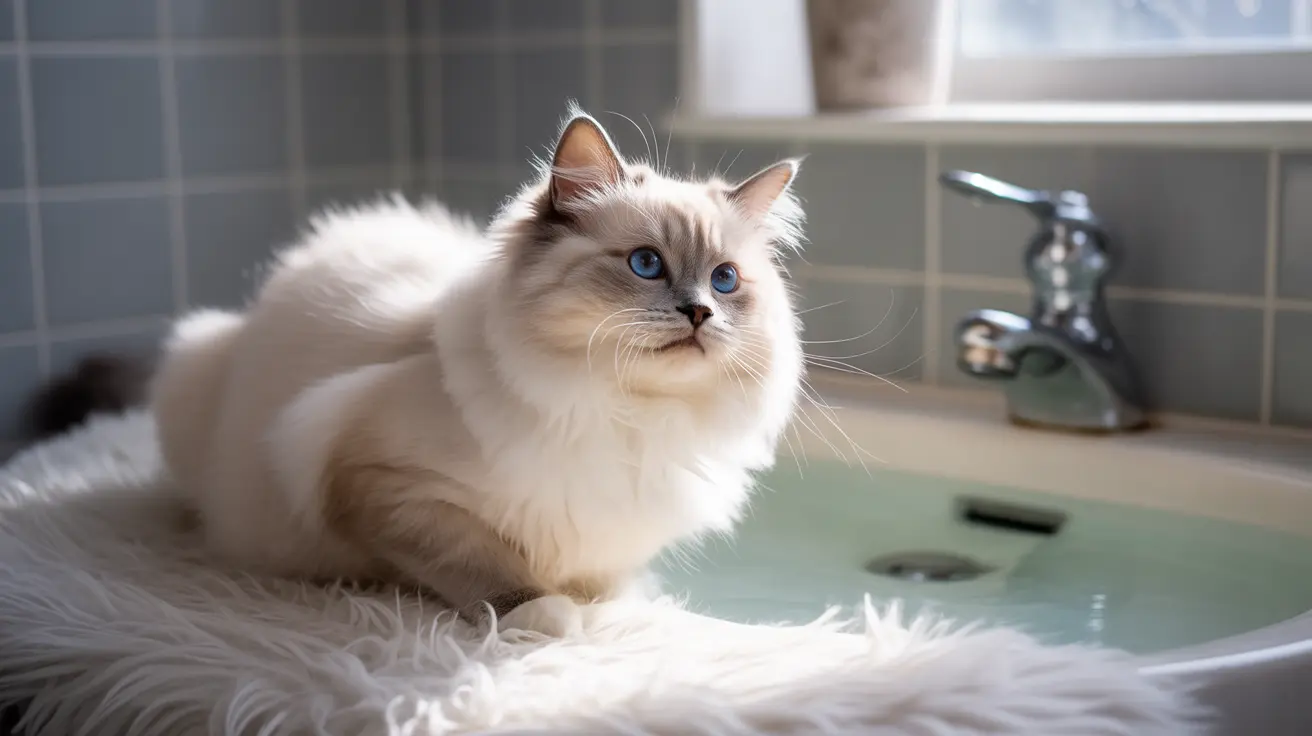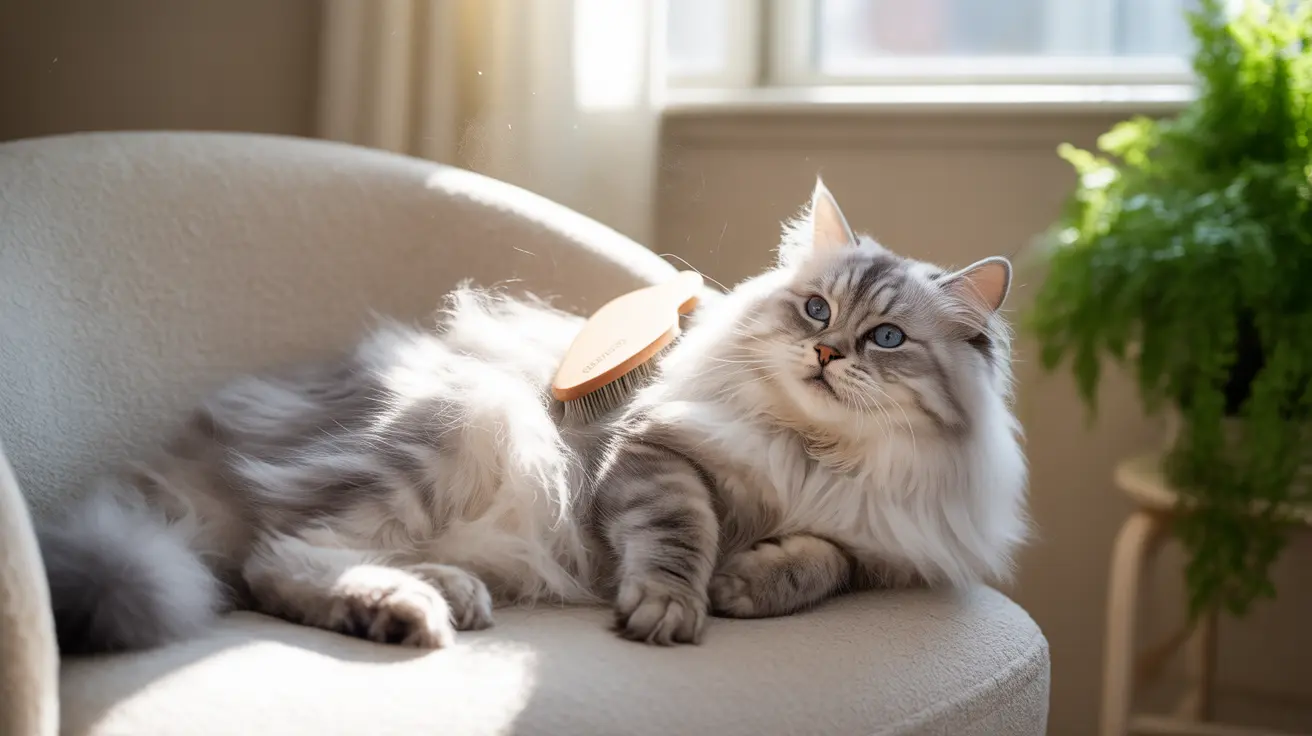When to Bathe a Cat: A Complete Guide to Safe and Necessary Feline Bathing
As a cat owner, you've likely wondered whether your feline companion needs regular baths like dogs do. The truth is, most cats are remarkably self-sufficient when it comes to hygiene, spending up to 50% of their waking hours meticulously grooming themselves. Their rough-textured tongues, equipped with tiny backward-facing barbs, effectively remove dirt and distribute natural oils throughout their coat, maintaining cleanliness without any human intervention.
However, there are specific circumstances where knowing when to bathe a cat becomes crucial for their health and well-being. Whether you're dealing with a messy accident, a health condition that impairs grooming, or specific breed requirements, understanding the right time and method for bathing your cat can make the difference between a stress-free experience and a traumatic one for both you and your pet.
In this comprehensive guide, we'll explore the situations that warrant bathing, provide step-by-step instructions for safe bathing techniques, and discuss alternatives that can keep your cat clean without the stress of a full bath.
Understanding Your Cat's Natural Grooming Abilities
Cats have evolved as exceptionally clean animals with sophisticated self-grooming systems. Their tongues contain rough barbs called papillae that function like tiny combs, removing loose fur, dirt, and debris while distributing protective oils throughout their coat. This natural process helps maintain proper hygiene, prevents matting, and regulates body temperature.
Most healthy cats spend several hours daily grooming themselves, which explains why they typically have no significant natural odor when in good health. This self-cleaning ability is so effective that regular bathing is not only unnecessary but can actually disrupt their natural oil balance and cause skin irritation.
When to Bathe a Cat: Recognizing Necessary Situations
Contamination and Safety Concerns
The most critical times to bathe your cat involve contamination with harmful or unpleasant substances. If your cat encounters toxic materials, strong odors, or sticky residues, immediate bathing may be necessary for their safety and comfort. Common scenarios include:
- Skunk spray encounters that leave lasting odors
- Contact with oil, sap, or sticky substances that can't be removed through normal grooming
- Exposure to mud, garbage, or other unsanitary materials
- Contamination with potentially toxic substances that could be harmful if ingested during self-grooming
Health-Related Bathing Needs
Certain health conditions can impair a cat's ability to groom effectively, making occasional bathing necessary. Elderly cats, those with arthritis, or overweight cats may struggle to reach all areas of their body, leading to hygiene issues. Additionally, cats recovering from illness or surgery may need assistance maintaining cleanliness during their recovery period.
Medical conditions such as seborrhea or specific skin infections may require medicated baths under veterinary guidance. In these cases, bathing becomes part of a therapeutic treatment plan rather than routine hygiene.
Breed-Specific Requirements
Some cat breeds have unique grooming needs that may require human intervention. Long-haired breeds like Persians can develop mats and accumulate dirt more easily, potentially benefiting from bathing every 4-6 weeks. Hairless breeds like the Sphynx have particularly special needs, requiring weekly baths to remove excess skin oils and prevent skin infections.
Pest Management
While bathing alone isn't sufficient to eliminate pest infestations, it can help reduce superficial populations of fleas, mites, ticks, or lice when used in conjunction with proper veterinary treatment. Medicated shampoos specifically designed for pest control can provide additional relief while professional treatment addresses the root of the problem.
Step-by-Step Guide to Bathing Your Cat Safely
Pre-Bath Preparation
Successful cat bathing begins with thorough preparation. Gather all necessary supplies before beginning, including cat-specific gentle shampoo (preferably unscented and hypoallergenic), cotton balls for ear protection, non-slip mats for safety, warm towels for drying, and optional treats or calming aids to reduce stress.
Choose a quiet time when your cat is calm and relaxed. Ensure the bathing area is warm and draft-free, as wet cats can become chilled quickly. Having everything within arm's reach prevents the need to leave your cat unattended during the process.
The Bathing Process
Start by filling the sink or tub with a few inches of lukewarm water—never hot or cold. The water should feel comfortable to your wrist, similar to what you'd use for a human baby. Place a non-slip mat in the bottom to provide secure footing for your cat.
Gently lower your cat into the water, supporting their body throughout the process. Begin wetting the coat from the neck down to the tail, carefully avoiding the head, eyes, ears, nose, and mouth areas. Most cats find water on their face particularly distressing, so spot-clean facial areas with a damp cloth if necessary.
Apply a small amount of cat-specific shampoo and gently massage it into the coat using circular motions. Work methodically from neck to tail, paying attention to areas that may be particularly soiled. Avoid vigorous scrubbing, which can cause skin irritation and increase stress.
Rinsing and Drying
Thorough rinsing is crucial to prevent skin irritation from shampoo residue. Use lukewarm water to rinse completely, ensuring no soap remains in the coat. This process may take longer than expected, as cats' dense fur can trap soap and require multiple rinses.
After bathing, immediately wrap your cat in warm, soft towels. Gently pat and squeeze the fur to remove excess water, avoiding rubbing motions that can cause matting. Keep your cat in a warm, draft-free environment until completely dry. Air drying is acceptable and often preferable to hair dryers, which can cause stress due to noise and forced air.
Alternatives to Full Bathing
Spot Cleaning Techniques
Many situations that seem to require a full bath can actually be addressed through targeted spot cleaning. Use pet-safe wipes or damp cloths to clean specific areas without subjecting your cat to the stress of a complete bath. This approach is particularly effective for minor soiling or when only certain body parts need attention.
Waterless Cleaning Products
Waterless or foam shampoos formulated specifically for cats provide an excellent alternative for routine cleaning needs. These products can help freshen your cat's coat and remove light soiling without the stress of water immersion. Regular brushing also plays a crucial role in maintaining cleanliness by removing loose fur, preventing mats, and distributing natural oils.
Professional Grooming Services
For cats that require regular bathing but become extremely stressed during the process, professional grooming services offer expertise in handling difficult cases. Professional groomers have specialized equipment and techniques that can make the bathing process safer and less stressful for both cats and their owners.
Reducing Stress During Cat Bathing
Creating a Calm Environment
The key to successful cat bathing lies in minimizing stress and maintaining a calm atmosphere. Speak to your cat in soothing tones throughout the process, and move slowly and deliberately. Sudden movements or loud noises can escalate anxiety and make the experience traumatic.
Consider using pheromone sprays or calming aids designed for cats to help reduce anxiety before bathing. Some cats respond well to having a familiar towel or blanket nearby that carries their scent.
Conditioning for Future Baths
If your cat requires regular bathing due to health conditions or breed characteristics, gradually conditioning them to tolerate water can improve future experiences. Start by simply placing your cat in an empty tub with treats and positive reinforcement, gradually introducing small amounts of water over multiple sessions.
Common Mistakes to Avoid
Water Temperature and Pressure
Using water that's too hot or too cold can cause discomfort and stress. Always test water temperature with your wrist and ensure it remains consistent throughout the bathing process. Additionally, avoid high water pressure, which can be frightening and uncomfortable for cats.
Inappropriate Products
Never use human shampoos, soaps, or cleaning products on cats. These products can disrupt the pH balance of feline skin and cause irritation or allergic reactions. Only use products specifically formulated for cats, and avoid any containing harsh chemicals or strong fragrances.
Forcing the Process
If your cat becomes extremely agitated or stressed during bathing, it's better to stop and reassess rather than force the process. Excessive stress can damage the bond between you and your cat and may make future grooming attempts even more difficult.
Breed-Specific Bathing Considerations
Long-Haired Cats
Cats with long, dense coats require special attention during bathing to prevent matting and ensure thorough cleaning. Pre-brushing is essential to remove loose fur and existing mats before bathing. During the bathing process, work shampoo through the coat in sections, and allow extra time for thorough rinsing.
Hairless Breeds
Hairless cats like the Sphynx have unique skin care needs that require regular bathing, typically once weekly. Their skin produces oils that would normally be absorbed by fur, so regular cleansing prevents buildup and potential skin problems. Use gentle, moisturizing shampoos designed for sensitive skin.
Indoor vs. Outdoor Cats
Indoor cats generally require less frequent bathing than outdoor cats, as they encounter fewer contaminants and have less opportunity to get dirty. Outdoor cats may need more frequent spot cleaning or occasional full baths, particularly during seasons when they're more likely to encounter mud, pollen, or other environmental contaminants.
Post-Bath Care and Monitoring
Maintaining Warmth
Wet cats lose body heat quickly, so maintaining warmth after bathing is crucial. Provide multiple dry towels and ensure your cat remains in a warm environment until completely dry. Monitor for signs of chilling, such as shivering or lethargy.
Skin and Coat Observation
After bathing, observe your cat's skin and coat for any signs of irritation, such as redness, excessive scratching, or unusual behavior. If you notice any concerning symptoms, consult with your veterinarian to rule out allergic reactions or other complications.
Frequently Asked Questions
How often should I bathe my cat?
Most cats never need baths unless they encounter specific situations requiring cleaning. Long-haired breeds may benefit from bathing every 4-6 weeks, while hairless breeds typically need weekly baths. The frequency should always be based on individual needs rather than a fixed schedule.
Can I use human shampoo on my cat?
No, human shampoos should never be used on cats. They have different pH levels than cat skin and can cause irritation, dryness, or allergic reactions. Always use shampoos specifically formulated for cats, preferably unscented and hypoallergenic varieties.
What should I do if my cat is terrified of water?
If your cat shows extreme fear of water, try gradual conditioning by introducing them to small amounts of water over time with positive reinforcement. For necessary baths, consider professional grooming services or consult your veterinarian about anti-anxiety options.
Is it safe to blow-dry my cat after a bath?
Hair dryers are generally not recommended for cats due to the noise and forced air, which can cause additional stress. Towel drying followed by air drying in a warm environment is safer and less stressful. If you must use a dryer, use the coolest setting and keep it at a distance.
When should I consult a veterinarian about bathing my cat?
Consult your veterinarian if your cat requires medicated baths for skin conditions, if you notice skin irritation after bathing, or if your cat's grooming habits suddenly change. Professional guidance is essential for cats with health conditions affecting their ability to self-groom.
What are the signs that my cat needs a bath?
Signs include visible contamination with substances they cannot clean themselves, persistent odors, sticky or oily residues in the fur, or inability to groom due to health issues. Remember that healthy cats typically have no significant odor and maintain their cleanliness naturally.
Can I use baby wipes on my cat instead of bathing?
Only use wipes specifically designed for cats, as baby wipes may contain ingredients harmful to felines. Cat-safe grooming wipes can be effective for spot cleaning and minor maintenance between baths when necessary.
Conclusion
Understanding when to bathe a cat is essential for responsible pet ownership, even though most situations don't require full baths. Your cat's remarkable natural grooming abilities typically maintain excellent hygiene without human intervention. However, recognizing the specific circumstances that do warrant bathing—such as contamination with harmful substances, health-related grooming difficulties, or breed-specific needs—ensures you can provide appropriate care when necessary.
When bathing becomes necessary, patience, preparation, and gentle handling create the best possible experience for both you and your cat. Remember that alternatives like spot cleaning, grooming wipes, and regular brushing can address many cleanliness concerns without the stress of a full bath. Most importantly, always prioritize your cat's comfort and well-being, and don't hesitate to seek professional help when dealing with particularly challenging situations or health-related bathing needs.






